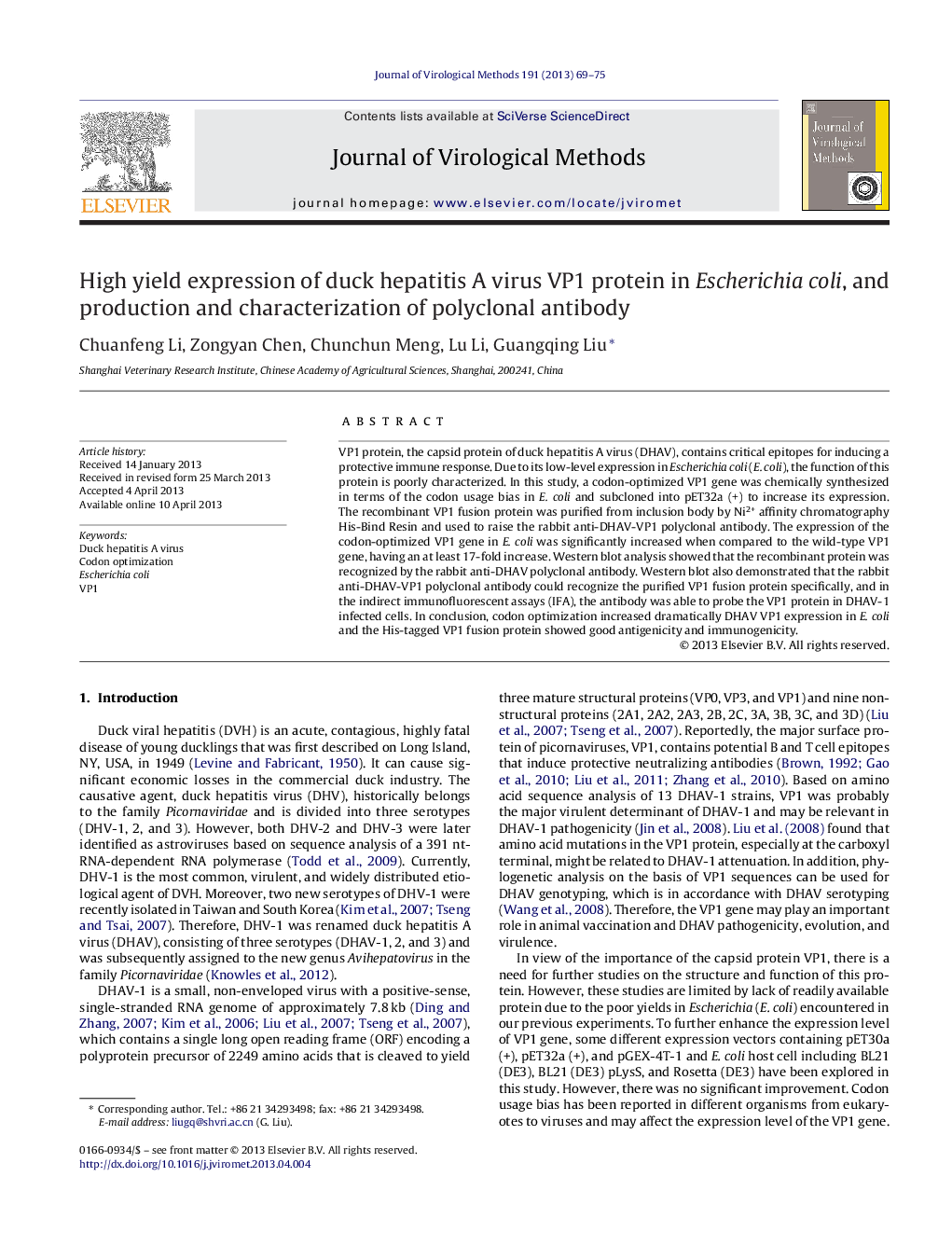| Article ID | Journal | Published Year | Pages | File Type |
|---|---|---|---|---|
| 3406646 | Journal of Virological Methods | 2013 | 7 Pages |
•Codon optimization of DHAV VP1 adapting to the codon usage bias of E. coli.•The expression level of the opti-VP1 gene was significantly increased in E. coli.•The His-tagged VP1 protein has good antigencity and immunogenicity.
VP1 protein, the capsid protein of duck hepatitis A virus (DHAV), contains critical epitopes for inducing a protective immune response. Due to its low-level expression in Escherichia coli (E. coli), the function of this protein is poorly characterized. In this study, a codon-optimized VP1 gene was chemically synthesized in terms of the codon usage bias in E. coli and subcloned into pET32a (+) to increase its expression. The recombinant VP1 fusion protein was purified from inclusion body by Ni2+ affinity chromatography His-Bind Resin and used to raise the rabbit anti-DHAV-VP1 polyclonal antibody. The expression of the codon-optimized VP1 gene in E. coli was significantly increased when compared to the wild-type VP1 gene, having an at least 17-fold increase. Western blot analysis showed that the recombinant protein was recognized by the rabbit anti-DHAV polyclonal antibody. Western blot also demonstrated that the rabbit anti-DHAV-VP1 polyclonal antibody could recognize the purified VP1 fusion protein specifically, and in the indirect immunofluorescent assays (IFA), the antibody was able to probe the VP1 protein in DHAV-1 infected cells. In conclusion, codon optimization increased dramatically DHAV VP1 expression in E. coli and the His-tagged VP1 fusion protein showed good antigenicity and immunogenicity.
